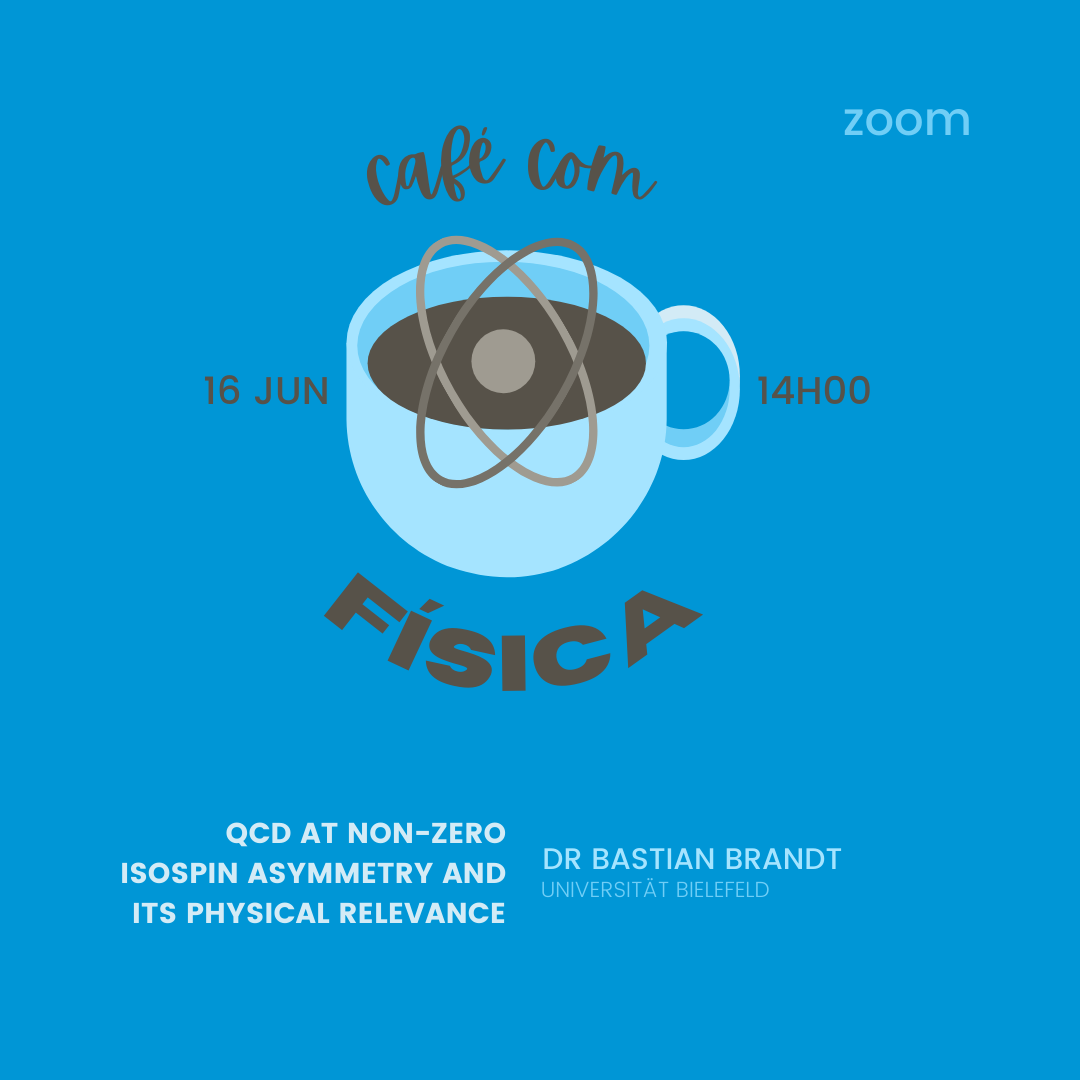QCD at non-zero isospin asymmetry and its physical relevance
by
Sala de Conferências
Departamento de Física FCTUC

Quantum Chromodynamics (QCD), as the fundamental theory for the strong interactions, is responsible for the vast majority of the mass of the visible matter in the Universe, governing the dynamics of the smalles boundstates in nature, hadrons, up to the largest, neutron stars. Nuclear matter typically features matter-antimatter and isospin asymmetries. The latter signifies an asymmetry between the number of u and d quarks, or, equivalently, between the number of protons and neutrons. The matter-antimatter asymmetry typically plays the dominant role, but there are also systems where the isospin asymmetry becomes equally or even more important.
We perform an ab initio study of QCD at pure isospin asymmetry, i.e., vanishing matter-antimatter asymmetry, using lattice QCD, the method of choice for strongly coupled systems. While simulations suffer from the infamous sign problem for non-zero matter-antimatter asymmetry, QCD at pure isospin asymmetry has a real action and is amenable to Monte-Carlo simulations. It has a rich phase diagram featuring a phase with Bose-Einstein condensation (BEC) of charged pions and a potential superconducting (BCS) phase at large isospin asymmetry on top of the standard hadronic and quark-gluon plasma phases. In this seminar, I will discuss the properties of QCD at pure isospin asymmetry and the current knowledge concerning the phase diagram and the equation of state from first principles. I will also discuss possible physical systems where the isospin asymmetry governs the dynamics, so that QCD at pure isospin asymmetry provides a good first approximation.
Filipe Veloso e Pedro Costa